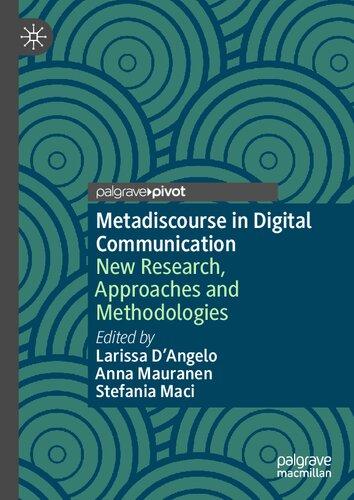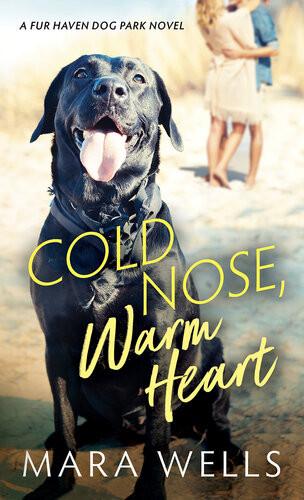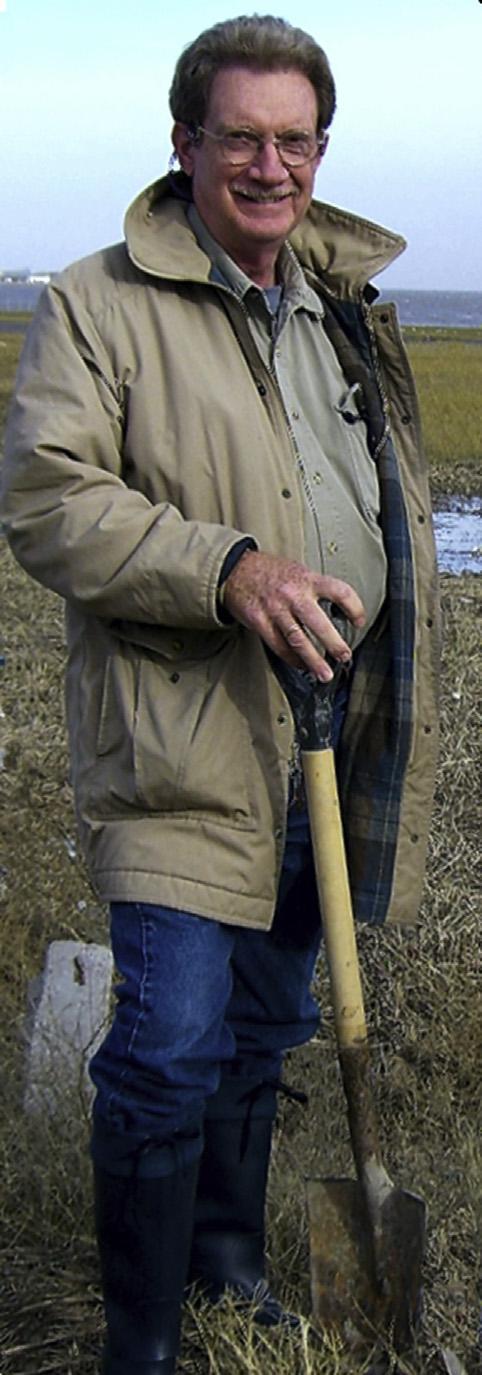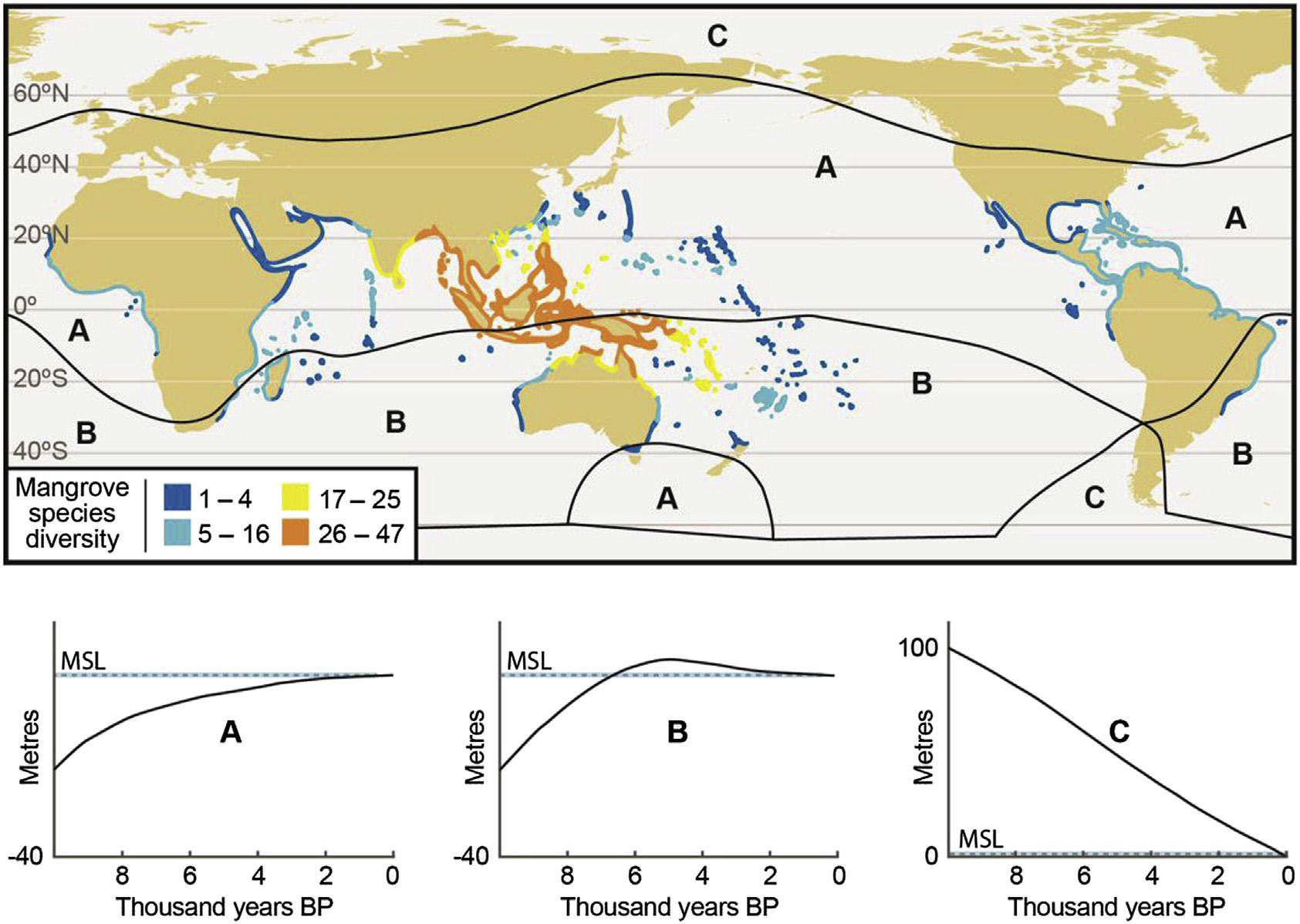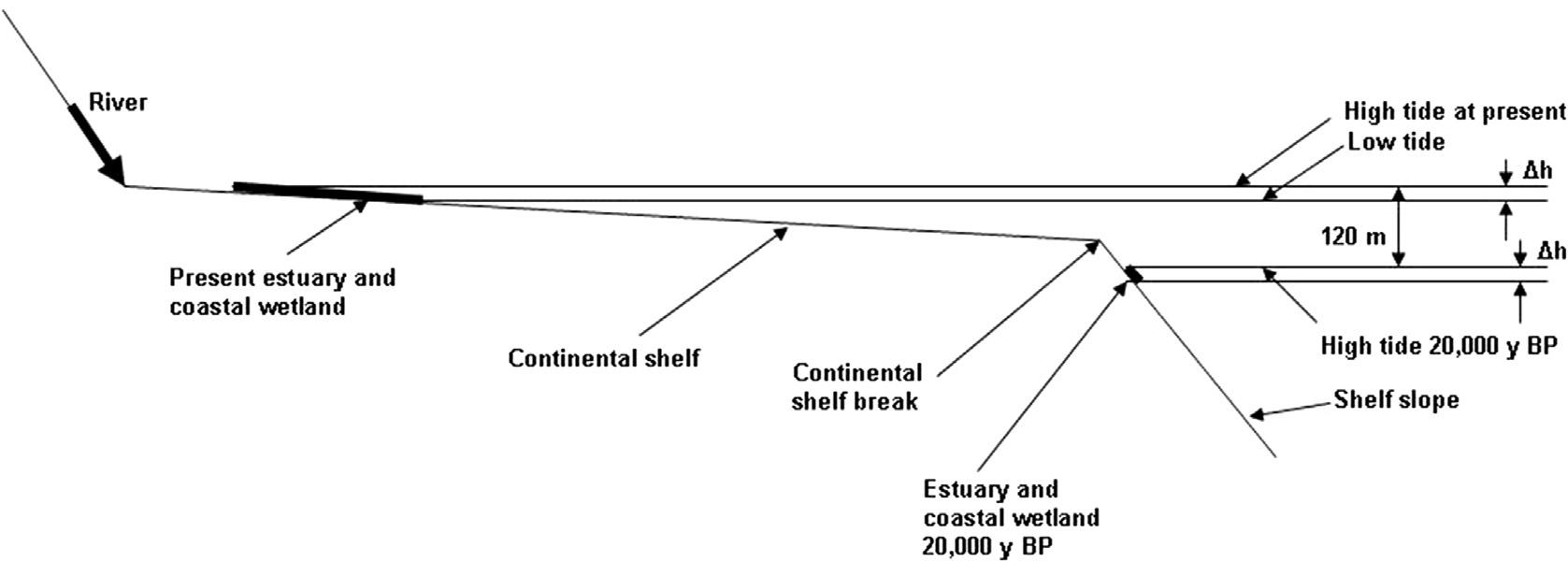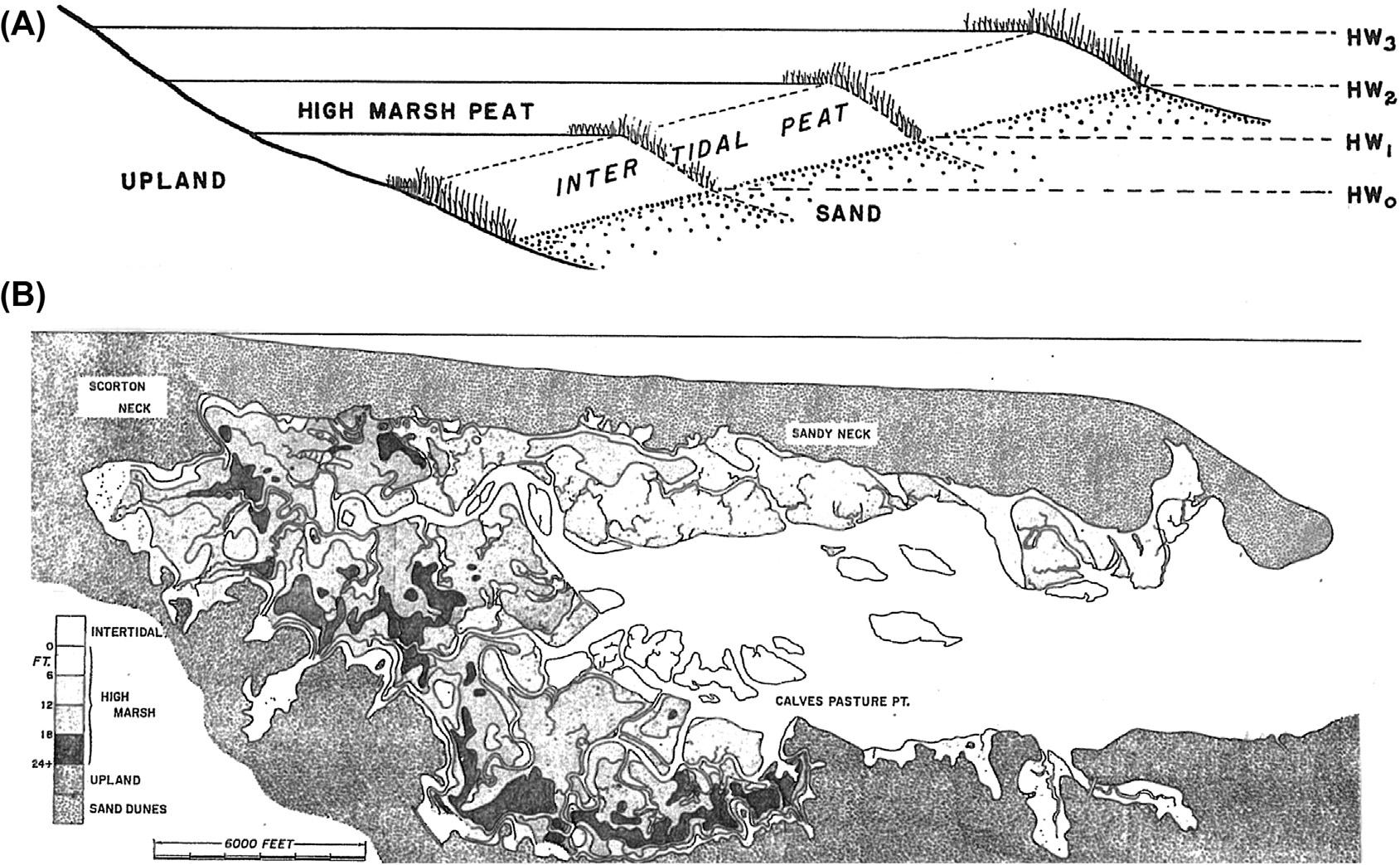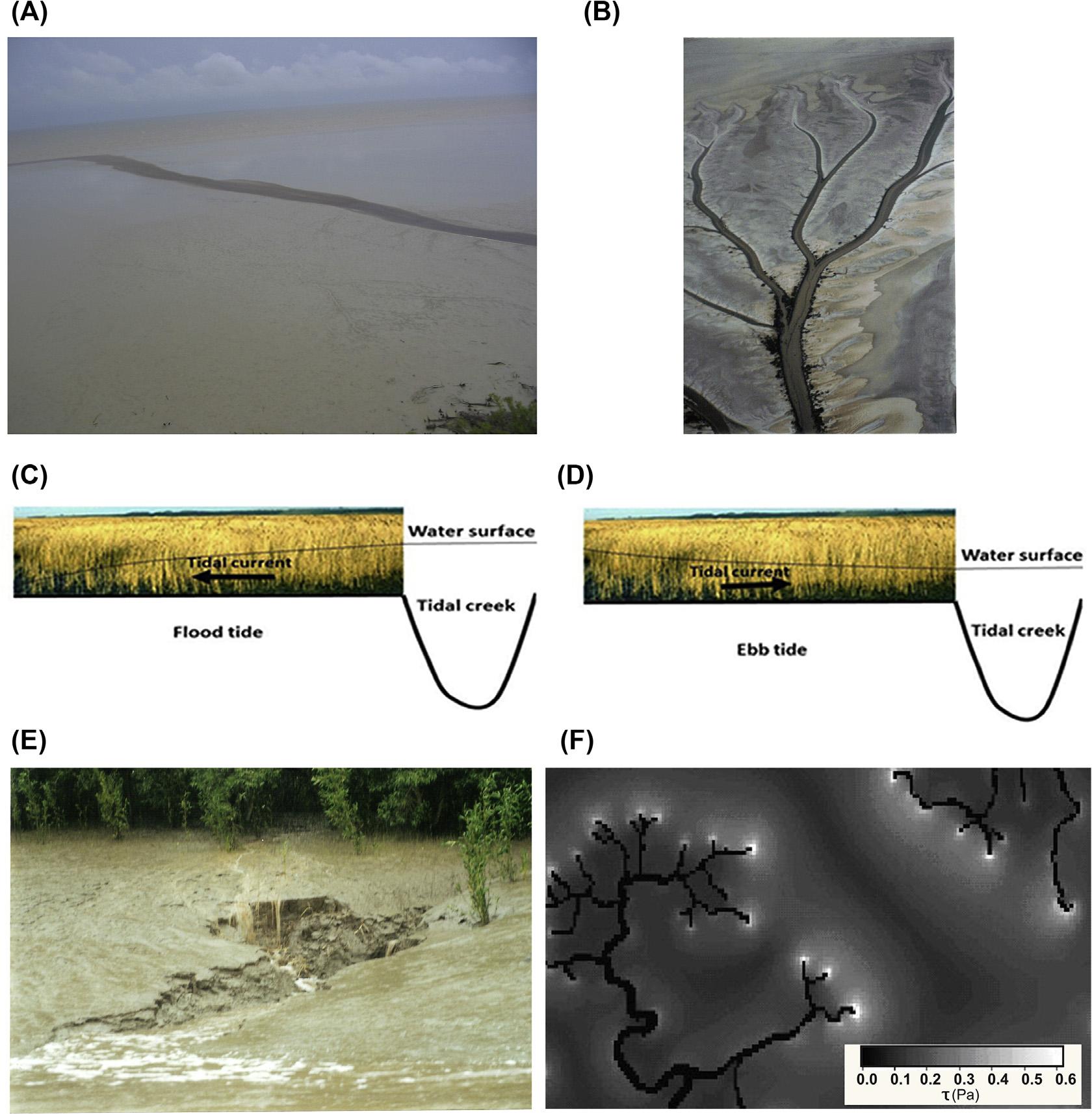Metadiscourse in Digital Communication: New Research, Approaches and Methodologies D'Angelo
https://ebookmass.com/product/metadiscourse-in-digital-communicationnew-research-approaches-and-methodologies-dangelo/
ebookmass.com
Cold Nose, Warm Heart Mara Wells
https://ebookmass.com/product/cold-nose-warm-heart-mara-wells/
ebookmass.com
Sweet Spot: a Friends to Lovers, Fake Dating Small Town Romance (Redemption Book 9) Jessica Prince
https://ebookmass.com/product/sweet-spot-a-friends-to-lovers-fakedating-small-town-romance-redemption-book-9-jessica-prince/
ebookmass.com
Molecular kinetics in condensed phases: theory, simulation, and analysis First Edition Elber
https://ebookmass.com/product/molecular-kinetics-in-condensed-phasestheory-simulation-and-analysis-first-edition-elber/
ebookmass.com
Predator (Wolves of Winter Creek Book 3) Sarah Spade
https://ebookmass.com/product/predator-wolves-of-winter-creekbook-3-sarah-spade/
ebookmass.com
Elsevier
Radarweg29,POBox211,1000AEAmsterdam,Netherlands
TheBoulevard,LangfordLane,Kidlington,OxfordOX51GB,UnitedKingdom 50HampshireStreet,5thFloor,Cambridge,MA02139,UnitedStates
Copyright © 2019ElsevierB.V.Allrightsreserved.DonaldR.Cahoon’scontributiontotheworkis theworkofaUSGovt.employeeandisinpublicdomain.
Nopartofthispublicationmaybereproducedortransmittedinanyformorbyanymeans, electronicormechanical,includingphotocopying,recording,oranyinformationstorageandretrieval system,withoutpermissioninwritingfromthepublisher.Detailsonhowtoseekpermission,further informationaboutthePublisher’spermissionspoliciesandourarrangementswithorganizationssuch astheCopyrightClearanceCenterandtheCopyrightLicensingAgency,canbefoundatour website: www.elsevier.com/permissions .
Thisbookandtheindividualcontributionscontainedinitareprotectedundercopyrightbythe Publisher(otherthanasmaybenotedherein).
Notices Knowledge andbestpracticeinthis fieldareconstantlychanging.Asnewresearchandexperience broadenourunderstanding,changesinresearchmethods,professionalpractices,ormedical treatmentmaybecomenecessary.
Practitionersandresearchersmustalwaysrelyontheirownexperienceandknowledgeinevaluating andusinganyinformation,methods,compounds,orexperimentsdescribedherein.Inusingsuch informationormethodstheyshouldbemindfuloftheirownsafetyandthesafetyofothers, includingpartiesforwhomtheyhaveaprofessionalresponsibility.
Tothefullestextentofthelaw,neitherthePublishernortheauthors,contributors,oreditors, assumeanyliabilityforanyinjuryand/ordamagetopersonsorpropertyasamatterofproducts liability,negligenceorotherwise,orfromanyuseoroperationofanymethods,products, instructions,orideascontainedinthematerialherein.
LibraryofCongressCataloging-in-PublicationData
A catalogrecordforthisbookisavailablefromtheLibraryofCongress
BritishLibraryCataloguing-in-PublicationData
AcataloguerecordforthisbookisavailablefromtheBritishLibrary
ISBN:978-0-444-63893-9
ForinformationonallElsevierpublicationsvisitourwebsite at https://www.elsevier.com/books-and-journals
Publisher: CandiceJanco
AcquisitionEditor: LouisaHutchins
EditorialProjectManager: EmilyThomson
ProductionProjectManager: NileshKumarShah
CoverDesigner: MarkRogers
Dedication TheeditorswishtodedicatethepresentbooktothememoryofDr.MarkM.Brinson,ourfriend,colleague,and memberoftheeditorialteamofthe firsteditionofCoastal Wetlands:AnintegratedEcosystemApproach.
GerardoM.E.Perillo,EricWolanski,DonaldR. Cahoon,andCharlesS.Hopkinson
Dr.MarkM.BrinsonretiredinSeptember2010with thetitleofDistinguishedResearchProfessor,aftermore than35yearsatEastCarolinaUniversity.Wewerelooking forwardtoseveralmoreactiveyearsofresearchandprofessionalservicewhenheunexpectedlypassedawayafew monthslater,onJanuary3,2011.Inwordsofhisdearfriend andcolleague,Dr.RobertChristian,welostathoughtful, hardworking,andcreativeEcosystemNaturalistthatday.
Markdevotedhisresearchtounderstandinghow wetlandsfunction,unravelingtheintricaterelationships amongthephysical,chemical,andbiologicalcomponents ofwetlandecosystems.Hisuniqueperspectivemadesubstantialcontributionsnotonlytowetlandsciencebutalso totheenvironmentalmanagementofwetlands.Mark’ s workhadasignificantimpactonthehydrogeomorphic classi ficationofwetlands,centraltothefunctionalassessmentofwetlandsandmitigationproceduresbasedon functionalloss.Thisfunctionalapproachalongwiththeuse ofreferencestatesthatoneofhismostsignificantcontributionsgreatlychangedmitigationpoliciesandtargetsfor restorationstrategies.
Throughouthiscareer,MarktaughtnumerouscoursesandworkshopsonwetlandecologywithintheUnited Statesandabroad.Hehasedited,authored,andcoauthoredmanypublicationsonwetland ecologyandservedasatechnicalconsultanttotheUSEnvironmentalProtectionAgency,US FishandWildlifeService,andtheSmithsonianInstitution.HewasalsoPresidentofthe SocietyofWetlandScientistsandservedonitsBoardofDirectorsforseveralyears.In addition,Markhasreceivedmanyhonorsandawards,includingtheThomasHarriotCollege ofArtsandSciencesDistinguishedProfessorAward,LifetimeAchievementAward,aNationalWetlandsAwardforScienceResearchcosponsoredbytheEnvironmentalLawInstituteandtheEnvironmentalProtectionAgency,andFellowshipoftheSocietyofWetland Scientists.
Onamorepersonalnote,ImetMarkin2003,whenIwasagraduatestudentatUniversidaddeBuenosAires.BythattimehewasusingaFulbrightForeignScholarshipAward
LauraL.Flynn CoastalResourcesGroup,Inc., Venice,FL,UnitedStates
IreneFortune ScottishOceansInstitute,School ofBiology,UniversityofStAndrews,Fife, Scotland
JonFrench CoastalandEstuarineResearch Unit,UCLDepartmentofGeography,UniversityCollegeLondon,GowerStreet,London, UnitedKingdom
ShuGao StateKeyLaboratoryforEstuarine andCoastalResearch,EastChinaNormal University,Shanghai,China
ChristopherHaight NewYorkCityDepartmentofParks & Recreation,NewYork,NY, UnitedStates
RichardS.Hammerschlag UnitedStatesGeologicalSurvey,PatuxentWildlifeResearch Center,Laurel,MD,UnitedStates
EllenKracauerHartig NewYorkCityDepartmentofParks & Recreation,NewYork,NY, UnitedStates
MarianneHolmer DepartmentofBiology, UniversityofSouthernDenmark,Odense, Denmark
CharlesS.Hopkinson DepartmentofMarine Sciences,UniversityofGeorgia,Athens,GA, UnitedStates
RobertL.Jefferiesy
S.B.Joye DepartmentofMarineSciences,UniversityofGeorgia,Athens,GA,UnitedStates
JeffreyJ.Kelleway DepartmentofEnvironmentalSciences,MacquarieUniversity,Sydney, NSW,Australia
JasonR.Kirby LiverpoolJohnMooresUniversity,SchoolofNaturalSciences & Psychology, Liverpool,UnitedKingdom
StefanoLanzoni DepartmentofCivil,Environmental,andArchitecturalEngineering,UniversityofPadova,PD,Italy
MaritLarson NewYorkCityDepartmentof Parks & Recreation,NewYork,NY,UnitedStates
PaulS.Lavery SchoolofScience & Centrefor MarineEcosystemsResearch,EdithCowan University,Joondalup,WA,Australia;Centro deEstudiosAvanzadosdeBlanes,Consejo SuperiordeInvestigacionesCientíficas,Blanes, Spain
NicolettaLeonardi UniversityofLiverpool, SchoolofEnvironmentalSciences,Department ofGeographyandPlanning,Liverpool,United Kingdom
RoyR.LewisIII CoastalResourcesGroup,Inc., SaltSprings,FL,UnitedStates
CatherineLovelock TheSchoolofBiological Sciences,TheUniversityofQueensland,St Lucia,QLD,Australia;GlobalChangeInstitute, TheUniversityofQueensland,StLucia,QLD, Australia
MarcoMarani DepartmentofCivil,Environmental,andArchitecturalEngineering, UniversityofPadova,PD,Italy
I.PeterMartini SchoolofEnvironmental Sciences,UniversityofGuelph,Guelph,ON, Canada
KarenL.McKee U.S.GeologicalSurvey,WetlandandAquaticResearchCenter,Lafayette, LA,UnitedStates
J.PatrickMegonigal SmithsonianEnvironmentalResearchCenter,Edgewater,MD, UnitedStates
StephenMidway DepartmentofOceanography andCoastalSciences,LouisianaStateUniversity,BatonRouge,LA,UnitedStates
IrisMöller CambridgeCoastalResearchUnit, DepartmentofGeography,Universityof Cambridge,Cambridge,UnitedKingdom
R.I.GuyMorrison NationalWildlifeResearch Centre,EnvironmentandClimateChange Canada,Ottawa,ON,Canada
ScottC.Neubauer DepartmentofBiology,VirginiaCommonwealthUniversity,Richmond, VA,UnitedStates
DavidM.Paterson ScottishOceansInstitute, SchoolofBiology,UniversityofStAndrews, Fife,Scotland yDeceased.
GerardoM.E.Perillo InstitutoArgentinode Oceanografía(CONICET UNS),Bahía Blanca,Argentina;DepartamentodeGeología, UniversidadNacionaldelSur,BahíaBlanca, Argentina
MariaCintiaPiccolo InstitutoArgentinode Oceanografia-UniversidadNacionaldelSur, BahiaBlanca,BuenosAires,Argentina
AndrewPlater UniversityofLiverpool,School ofEnvironmentalSciences,Departmentof GeographyandPlanning,Liverpool,United Kingdom
PaulaPratolongo UniversidadNacionaldelSur, Dto.deBiologíaBioquímicayFarmacia CONICET,InstitutoArgentinodeOceanografía,BahíaBlanca,Argentina
AndreaRinaldo DepartmentofCivil,Environmental,andArchitecturalEngineering,UniversityofPadova,PD,Italy;Laboratoryof Ecohydrology,EcolePolytechniqueFèdèrale Lausanne,Lausanne,Switzerland
VictorH.Rivera-Monroy Departmentof OceanographyandCoastalSciences,College oftheCoastandtheEnvironment,Louisiana StateUniversity,BatonRouge,LA,United States
KerryleeRogers Geoquest,UniversityofWollongong,Wollongong,NSW,Australia
AndreS.Rovai DepartmentofOceanography andCoastalSciences,CollegeoftheCoast andtheEnvironmen t,LouisianaState University,BatonRouge,LA,UnitedStates; ProgramadePós-GraduaçãoemOceanogra fi a,UniversidadeFederaldeSanta Catarina,Florianópolis,Brazil
NeilSaintilan DepartmentofEnvironmental Sciences,MacquarieUniversity,Sydney,NSW, Australia
CharlesE.Sasser DepartmentofOceanography andCoastalSciences,LouisianaStateUniversity,BatonRouge,LA,UnitedStates
C.A.Schutte LouisianaUniversitiesMarine Consortium(LUMCON),Chauvin,LA,United States
M.Seidel InstituteforChemistryandBiologyof theMarineEnvironment(ICBM),Universityof Oldenburg,Oldenburg,Germany
LiudmilaA.Sergienko DepartmentofBotany andPlantPhysiology,PetrozavodskState University,Petrozavodsk,Russia
OscarSerrano SchoolofScience & Centrefor MarineEcosystemsResearch,EdithCowan University,Joondalup,WA,Australia
DanielO.Suman RosenstielSchoolofMarine andAtmosphericScience,UniversityofMiami, Miami,FL,UnitedStates
RebeccaK.Swadek NewYorkCityDepartmentofParks & Recreation,NewYork,NY, UnitedStates
CraigTobias UniversityofConnecticut,Groton, CT,UnitedStates
RobertR.Twilley DepartmentofOceanographyandCoastalSciences,Collegeofthe CoastandtheEnvironment,LouisianaState University,BatonRouge,LA,UnitedStates
JennekeM.Visser InstituteforCoastaland WaterResearch,andSchoolofGeosciences, UniversityofLouisianaatLafayette,Lafayette, LA,UnitedStates
DennisF.Whigham SmithsonianEnvironmental ResearchCenter,Edgewater,MD,UnitedStates
EricWolanski TropWATERandCollegeof ScienceandEngineering,JamesCookUniversity,Townsville,QLD,Australia;Australian InstituteofMarineScience,Townsville,QLD, Australia
ColinD.Woodroffe SchoolofEarthandEnvironmentalSciences,UniversityofWollongong, Wollongong,NSW,Australia
C.S. Wu MaxPlanckInstituteforMarine Microbiology,Bremen,Germany
PrefacetotheSecondEdition Aswewrotethispreface,werealizedthat exactly10yearshavepassedsincethetime wewrotetheoriginalprefaceforthe first edition.Threeandhalfyearsago, Elsevier withasurprisingmailbyCandice Janco invitedustolookintothepossibility ofasecondedition.Althoughinitiallythe thoughtofgettingbackintoalltheeffortthat editingabookofthesecharacteristicsdemandsseemedanunhealthyadventure,all ofusactuallyjumpedrightinwiththeidea. Unfortunately,aswepresentinthededicatory,ourgoodfriendMarkBrinsonpassed awayintheperiodbetweenbotheditions. However,ChuckHopkinsonhasbeenbrave enoughtocomeonboardplayingamajor roleintheoutcomeofthebook.
Allthecommentsgivenintheoriginal prefaceareastruetodayastheywerethen. Unfortunately,manymanagementissues andcomplexsituationsthatcoastalwetlands weresufferingarestillpresenttodayand, graver,theyhavebecomeworse.Therefore, theywillnotberepeatedhere.
Inthissense,totheoriginalstructureof thebook,weaddednewchapterspointing outspecificallynewviewsofcoastalwetlands managementandvaluation.Nevertheless, eachchapterwassignificantlyimprovedand updatedtoreflectonthenewadvances achievedbythewetlandcommunityinthe last10years.
Manyoftheoriginalleadauthorsfrom the firsteditiongladlyacceptedthechallenge togetbacktotheiroldnotesandredothem forthenewedition.Afewcouldnotcommit themselvestothetaskforvariousreasons.In thecaseswhereitwaspossible,wefound newadventurerswhowerewillingtotake the “relaybaton” andwriteacompletely newchapteronthesubject.
Inallcases,wemustremember,authors wereaskedtomakeathoroughreviewona speci ficsubjectratherthandescribetheir ownpersonalwork.However,wereliedon theoutstandingcapabilitiesandworldwide recognitioneachoftheleadauthorsbrought tothebook,accompaniedbynolesser coauthors.
Again,wecouldnothavepresenteda bookofthislevelofqualitywithoutthe unsel fishinputofover50reviewers.They wereessentialinprovidinguswiththeir expertiseforthosechaptersinwhichwemay notbeasconfidentasthem.Abookisas goodasitsauthors,andalsoitisimproved bythequalityofitsreviewers.Wecannot thankenougheachandeveryoneofthem fortheirtimeandsupport.
Finally,againwecannotthankenough theoriginalinvitationofCandiceJanco wholeftusnotonlyforanotherposition withinElsevieralmostatthebeginningof theprojectbutalsointheverycapable
FIGURE1.1 Thecoastaloceanlandscapehighlightingatidalwetland-dominatedestuaryanditslinkagestothe adjacentwatershed/river,thecontinentalshelf,andtheopenocean. Arrows illustratekeyhydrologicandmaterial exchangesbetweenthevariouslandscapeelements.
watersandbottoms.Quiteoftenthereareextremelysharptransitionsbetweenlandscape elementsinthecoastalzone,forexample,betweenopenwaterandmarsh,marshand uplands,andseagrassandmangroves(Fig.1.2AandB).Groundwater(freshwaterdraining fromuplands)isanothersourceofupland-derivedwatersandmaterials.Theexchangeand mixingofwaterandmaterialsenteringfromriversandtheoceandefinestheoverallstructureanddistributionoflandscapeelements.Thedistributionanddepositionofsediments fromlandandtheoceanestablishestheoverallbathymetry.Bathymetryincombination withtidalrangeandthespatialgradientinsalinityaretheprimarydeterminants ofecosystemdistributionwithinthecoastaloceanlandscape.Emergentandsubmerged vegetation,onceestablished,exertanecogeomorphicfeedbackonthefateofriverandocean sourcesofvariousmaterials.Forexample,vegetationslowsthemovementofwater, promotesthesettlingofsedimentparticles,andacceleratesestuarinein fillingandtidal wetlandexpansionandaccretion.
2.ASYNTHESISOFCOASTALWETLANDSSCIENCE Inthissectionweprovideanoverviewofthestructureandfunctioningofcoastalwetlands withemphasisonkeyforcesandprocessesthatinteractwiththeircoastalgeographic location.Itisdifficulttodiscusstheseforcesinisolationbecause,forexample,climatechange influencessealevel,sealevelforceschangesinvegetationstructure,disturbance,andherbivoryaffectvegetation,andsoforth.Assuch,comparisonacrossmajorecosystemtypescan provideinsightintothedifferencesandtherelativeimportanceofbothextrinsicforcesand intrinsicstructure.Wealsodiscusstheroleofmodelinginelucidatingtherelativeimportance ofkeyprocessesandinpredictingtheeffectsofalterationbyhumans.Thislasteffectpresents uswithchallengesofhowtobestprotectandmanagecoastalwetlandsfortheirattributesof lifesupportand,importantly,fortheircontributiontoestheticandculturalvalues.Tothis end,weoutlinekeyresearchneedsthatrecognizetheusefulnessofworkingbeyond “single factorcauseandeffect.”
2.1Geography Coastalwetlandsincludeseagrassmeadows,intertidal flats,tidalsaltmarshes,mangrove forests,andtidalfreshwaterwetlands.Theyarefoundinsixcontinentsandallbutextreme polarlatitudes.Cliffsandrockyshoresareprobablytheonlycoastswithminimalwetlands. Worldwide,wetlandsareheavilyimpactedbyincreasingpopulationandcoastaldevelopment.Theareaoccupiedbywetlandshasbeengreatlyreducedoverthepast100years anditwilllikelydecreasesubstantiallythroughoutthe21stcenturyaspopulationpressure andtherateofSLRaccelerate.Thereisconsiderableuncertaintyinestimatesoftheglobal areacoveredbyalltidalwetlands.Muchoftheuncertaintyistheresultofinsuf ficientdetail insatelliteimagery(e.g.,1km)andtheintegrationofdisparateandincompatiblegeospatial andstatisticaldatasources(FAO,2007).ConsistentutilizationoftheUSGeologicalSurvey (USGS)compiledLandsatarchive,whichisnowfreelyavailable,couldlikelydecreasethe uncertaintyinestimatesthatarecurrentlyintheliterature.
Estimatesofmangrovecoverdifferwidely,fromabout80,000km2 toabout230,000km2 worldwide(Diop,2003;Dukeetal.,2007).Oneofthemostrecentestimates,basedon30m resolutionLandsatimagery,is137,760km2 (Girietal.,2011).Usingaslightlydifferentapproach, however, HamiltonandCasey(2016) estimateglobalmangroveareaofonly83,495km2.The largestextentofmangrovesisinIndonesia,andabout75%arelocatedinjust15countries (Girietal.,2011).Althoughthegreatestdistributionisbetween5 Nand5 S,mangrovesextend from31 200 Nto38 590 S(Fig.1.3).Thedistributioniscontrolledbythecombinationofcontinental(nofrostsoronlyveryrarely,typicallylessthan1frostevery10years; LugoandPatterson Zucca,1977)andoceanicclimates(warmwaters; Dukeetal.,2007).Recentcompilationsestimateglobalsaltmarshareaatabout54,950km2 (Mcowenetal.,2017)Theareaofsaltmarshes inCanadaandtheUnitedStatesaloneisabout19,600km2 accordingto Chmuraetal.(2003) and20,000km2 accordingto Mcowenetal.(2017).Largeareasofsaltmarshes (w7000 13,000km2)mightalsoexistinnorthernRussiaandAustralia(Mcowenetal.(2017) Saltmarshesarealsofoundscatteredinthemangrovebelt,usuallyintheupperintertidalareas landwardofmangroves.Seagrassescoverwasmostrecentlyestimatedtobe177,000km2 worldwide(GreenandShort,2003;Waycottetal.,2016),rangingfromatleast165,000km2
FIGURE1.3 Worlddistributionofmangroves(shadedareas alongtropicalandsubtropicalshorelines)andthe approximatedistributionofcoaststhatfollowoneofthreerelativesealeveltrajectoriesforthepast10,000years.Zone Ahasseenacontinualrise,zoneBexperiencedamorerapidriseinitiallyfollowedbyaslowdecreaseinSL,while zoneCexperiencedacontinueddecreaseinsealevelprimarilyasaresultoftectonicactivityandreboundingfrom glacialcoverage. RedrawnfromEllison,J.,2009.Geomorphologyandsedimentologyofmangroves.In:Perillo,G.M.E., Wolanski,E.,Cahoon,D.R.,Brinson,M.M.(Eds.),CoastalWetlands:AnIntegratedEcosystemApproach.Elsevier,Amsterdam.565 591andadaptedfrom;Woodroffe,C.D.,1992.Mangrovesedimentsandgeomorphology.In:Robertson,A.I.,Alongi, D.M.(Eds.),TropicalMangroveEcosystems.AmericanGeophysicalUnion,WashingtonD.C.7 42;Pirazzoli,P.A.,1996.Sea LevelChanges:TheLast20000Years.JWiley & Sons,Chichester;Lambeck,K.,Woodroffe,C.D.,Antonioli,F.,Anzidei,M., Gehrels,W.R.,Laborel,J.,Wright,A.J.,2010.Paleoenvironmentalrecords,geophysicalmodelling,andreconstructionofsea leveltrendsandvariabilityoncentennialandlongertimescales.In:Church,J.A.,Woodworth,P.L.Aarup,T.,Wilson,W.S. (Eds.),UnderstandingSeaLevelRiseandVariability,Wiley-Blackwell,Chichester,61 121.SeeChapter20.
upto600,000km2 (Nellemannetal.,2009a;Hopkinsonetal.,2012).Theworldwideareaoftidal flatsandfreshwatercoastalwetlandsseemsunknown,thoughback-of-the-envelopeestimates suggestthattheymayreach300,000km2.
2.2GeomorphicEvolutionUnderPastClimateChange:HowPresentCoastal WetlandsCametoBe
Wetlandscontinuouslyevolveintimeandspace.Thestoryofpresent-daycoastalwetlandsstarts120,000yearsago,whichisaninterglacialperiodthatlastedabout15,000years
FIGURE1.5 Sketchofthecontinentalshelfandcontinentalslope,andthelocationoftheestuaryandthecoastal wetlandsatpresentand20,000yearsBP(yearsbeforepresent).
higher(Isla,1989)andupto7mhigherthanatpresent(GómezandPerillo,1995),andit decreasedsmoothlytoitspresentelevationuntilabout2000yearsago.Inthoseareaswhere sealevelhasdropped,thecoastinitiallyrecededfromanadvancingseaandthenprograded slightlyduringthelast5000years.Withineachofthesezones,therewerelocalexceptions (Sweetetal.,2017),especiallyindeltaicregionswheresedimentsupplywassuf ficientto compensateforcoastalretreat.
Worldwidetheestuariesrespondedtothesechangingconditionsofsealevel,riverand sedimentdischarge,changingseaice,watercurrents,storms,andwavesbroughtaboutby anewclimate.TheelevationoftheMSLrelativetolandleveldeterminedatanytimethelocationoftheestuary.Thenetsedimentbudget,thebalancebetweenthesedimentinflow(from theriverandimportfromthesea),andthesedimentout flowfromtheestuarytothesea determinedtheevolutionoftheestuary.Wheretherelativesealevelfellrapidly(zoneC in Fig.1.3),newlandemergedconstantlyandtheestuarymigratedseaward,continuallyreinventingitself;the “old” estuaryroseabovesealevelandbecamepartofthelandscape;this evolutionisstillproceedinginzoneC(Fig.1.6A).Wheresealevelrose, “old” estuarieswere drownedandnewestuariesformedlandwardwherethelandmetthesea(Fig.1.6B).
InzoneC(Fig.1.3),nosteadystatehasyetbeenreached.Theestuaryisstillmoving seawardasnewlandemerges.InzoneA,aquasi-steadystatewasnearlyreachedbythe endofthe1800sastherelativerateofSLRwasonlyabout0.4mmyear 1 fortheprevious 1000yearsorso.InzoneB,theestuaryisstillevolving,albeitmuchslowerthaninthe pastbecausethechangesinrelativeMSLsloweddownconsiderablyduringthelast 6000years.ThedownwardtrajectoryintheabsoluterateofSLRbegantoreverseworldwide duringthemid-1800s(Kempetal.,2011).Regardlessofwhetherestuarieswereinsteadystate ornotatthattime,changesthatbeganthenhaveonlybecomegreatersince.Thiswilllikely movealltidalwetlandsoutofsteadystate,socoastalwetlandswillcontinuetomigrate.
2.3TheInfluenceofVegetationontheGeomorphicEvolutionWith ClimateChange
Estuariestrapsomeportionoftheriverinesedimentinput(Perillo,1995;Wolanskiand Elliott,2015).EstuariesinzoneCarethussiltingassoonastheyforminanewposition;small
occurred(WoodroffeChapter2andEllisonChapter20).Atsomelocations(Fig.1.6C)awide, shallowestuaryformed;thisenabledavastcoastalwetlandtoformthatfringedthemain channelastheestuary filledwithsedimentfromboththeriverandthesea(throughprocesses suchastidalpumping).Becauseofvegetationandadequatesedimentsupplies,thiswetland typeacceleratedsiltationandenabledtheestuarinesystemtokeepupwithSLR.Laterthis estuarine,salinesedimentwascappedbyfreshwatersediment;theestuaryhadbythen reached “oldage” becauseithadusedalltheaccommodatingspaceonlandandcould thenonlyevolvefurtherbymovingoffshoretoformadelta,oritcanoccasionallyberejuvenatedbyopeninganewchannelorbyisostaticorstructuralmovements.Inothercases (Fig.1.6D),theestuarymoveduplandwitharisingsealeveluntilabout6000yearsago whensealevelstabilized;astheestuarymigrated,sodidthecoastalwetlands,leavingbehind theirsignatureintheformofawell-preservedorganic-richmudlayer.Thismudwascapped byinorganicsediment,whichprovidedasubstrateonwhichthewetlandprograded,andin theprocessformedanear-surface,organic-richmudlayer.Stillinothercases(Fig.1.6E),principallyinmicrotidalareasandinareaswherethegeomorphologyformedsemienclosed coastalwatersassealevelrose,riverinesediment filledalagoon-typeenvironmentand thisareawascolonizedbywetlands,leavingbehindanorganic-richmudlayer.Therelative sealevelevolutionoverthelastfewthousandyearshascreated,insediment-starvedestuariesofzoneB,avariedsuccessionofwetlandhabitats,including(Fig.1.6F)thedie-offof mangrovesandtheircappingbycalcareoussedimentlatercolonizedbyseagrass,and (Fig.1.6G)thedie-offofmangrovesandtheircappingbycalcareoussedimentwithan evenlatercappingbyanewmangroveswampwithaccretingorganic-richmud.Inthe caseoftemperate,sediment-starvedestuariesinzoneB,thelackofsedimentinputledto erosionoftheoriginalwetlandsedimentsandanevolutioninwetlandtypes.Forexample, inBahíaBlancaEstuary,Argentina,someolder Sarcocornia highmarsheseroded(Minkoff etal.,2005,2006;Escapaetal.,2007),whichloweredtheirpositioninrelationtoMSLand ledtotheirevolutiontotidal flats,whichlaterwerecolonizedby Spartina (Pratolongo etal.,2013;Pratolongoetal.,Chapter3).
ThemarshesinBarnstableHarborinthenortheasternUnitedStatesareagoodexampleof tidalwetlanddevelopmentinazoneAsystem.Developmentofthetidalwetlands commencedwhentherateofSLRslowedtoabout0.4mmyear 1 about2000to3000years ago(Fig.1.4C). Redfield(1965) tooksedimentcorestobasementcoarsesandsand,onthebasisof 14Cdatingthepeatatvariousdepthsinthecores,reconstructedtheprocessesofharbor infilling,wetlandtransgression,wetlandprogradation,andverticalelevationgain(Fig.1.7A).
Theinitialmarshwas firstestablishedalongtheupland-tidal flatshorelinebetweenMSLand meanhighwater(MHW).Oncemarshvegetationbecameestablished,themarshgained elevationthroughthecombinedprocessesofenhancedsedimenttrappingduringtidalinundationandtheaccumulationofundecomposedmarshplantrootsandrhizomes(Fig.1.7B). Concomitantlywithmarshelevationgain,tidal flatsgainedelevationbecauseofdeposition ofocean-derivedsedimentthroughtheprocessoftidalpumping(Woodroffe,Chapter2and EllisonChapter20).Marshplantsmigrateontothesenewlycreatedtidal flatswhenelevation reachesMSL,whichenablesthemarshtoprogradetowardopenwater.Assealevelrose (Fig.1.7AandB),uplands flooded,enablingmarshplantstotransgressupacrossthenow floodeduplands.Thisprocesscontinuestothisdayassealevelcontinuestoriseandsedimentsentertheharborbytidalpumpingfromtheoceanorrunofffromuplands.
FIGURE1.7 Saltmarshdevelopmentoverthepastseveralthousandyears.(A)Thedistributionofpeatdepthsin themarshesoftheBarnstableHarborEstuary.Contoursare6ft(1.6m).(B)SaltmarshdevelopmentinBarnstable HarborEstuarydemonstratingtheprocessesofelevationgain,progradationtowardopenwaterandtransgression ontouplandsinresponsetosedimentinputsandsealevelrise. FromRedfield,A.,1965.Ontogenyofasaltmarsh.Science 145,50 55 Figs.1and2page52.ReprintedandusedwithpermissionofAAASandESA.
Thus,coastalwetlandshavebeensubjectedtolargechangesindriversoverthepast 20,000years,yettheyhaveadapted,greatlyexpandedinarealdistribution,especiallyduring thelast4000years,andsurvived.Sealevelevolution,changesinsedimentandwaterinput fromthecontinentandfromtheocean,andtidalrangemodifications,inadditiontotheevolutionofwetlandplantsandfauna,arethecontrollingfactorsthatactedonthevarioustypes ofwetlands.Therefore,coastalwetlandsprovideasigni ficantexampleofoneofthemost resilientecosystems anecosystemthatcanwithstandmajormodificationsbutstillevolve inasustainablemanner.Coastalwetlandsareconstantlyevolvingbyfeedbackmechanisms, especiallywithrespecttorisingsealevelandtodisturbances.Thestateofaparticular wetlandatanyonetimeaffectsitsfutureandisdeterminedbytheaccumulatedhistoryof previousstates.Whatweseeinawetlandisasnapshotintime.
2.4TheStabilizingRoleofVegetation Thereisastronginterplaybetweentidalhydrodynamics,sedimentinfillingandredistributioninintertidalregions,wetlandplants,andthegeomorphicdevelopmentofdrainage networksandtidalwetlandsinestuaries(Woodroffe,Chapter2;Gao,Chapters10andEllison, 20;D’Alpaosetal.,Chapter5).Aslongasmud flatelevationremainsbelowMSL,generally themud flatremainsfairly flatanduneventfulandtidalcreeksmaynotform(Fig.1.8A).
FIGURE1.8 Aerialphotographsof(A)the6-kmwidemud flatatthemouthoftheMaryRiver,Australia’ s NorthernTerritory,showingtheriverchannelandnotidalcreeks,and(B)adendritictidalcreekinanunvegetated tidal flat(KingSound,WesternAustralia;mangrovetreesareonlypresentinthelowerreachesofthecreekwhere theyformaone-treewidevegetationstrip).(C)Sketchoftheasymmetryofthewatersurfaceandthetidalcurrentsin acoastalwetlandat floodtideand(D)ebbtide.(E)Thetipofatidalcreekinanunvegetatedmudbankstopsatthe mangrovevegetation(DarwinHarbour,Australia).(F)Numericalpredictionofthedistributionoffrictionalstresses inadendritictidalcreekinanunvegetatedmud flat(D’Alpaosetal.,2009).(G)Adensemangroverootnetworklocks thesoiltogethertoadepthofseveralmetersandinhibitswaveerosionofthebank.(H J)Highnear-bottom vegetationdensityduetotreetrunks,proproots,buttresses,andpneumatophoresinmangroves.
